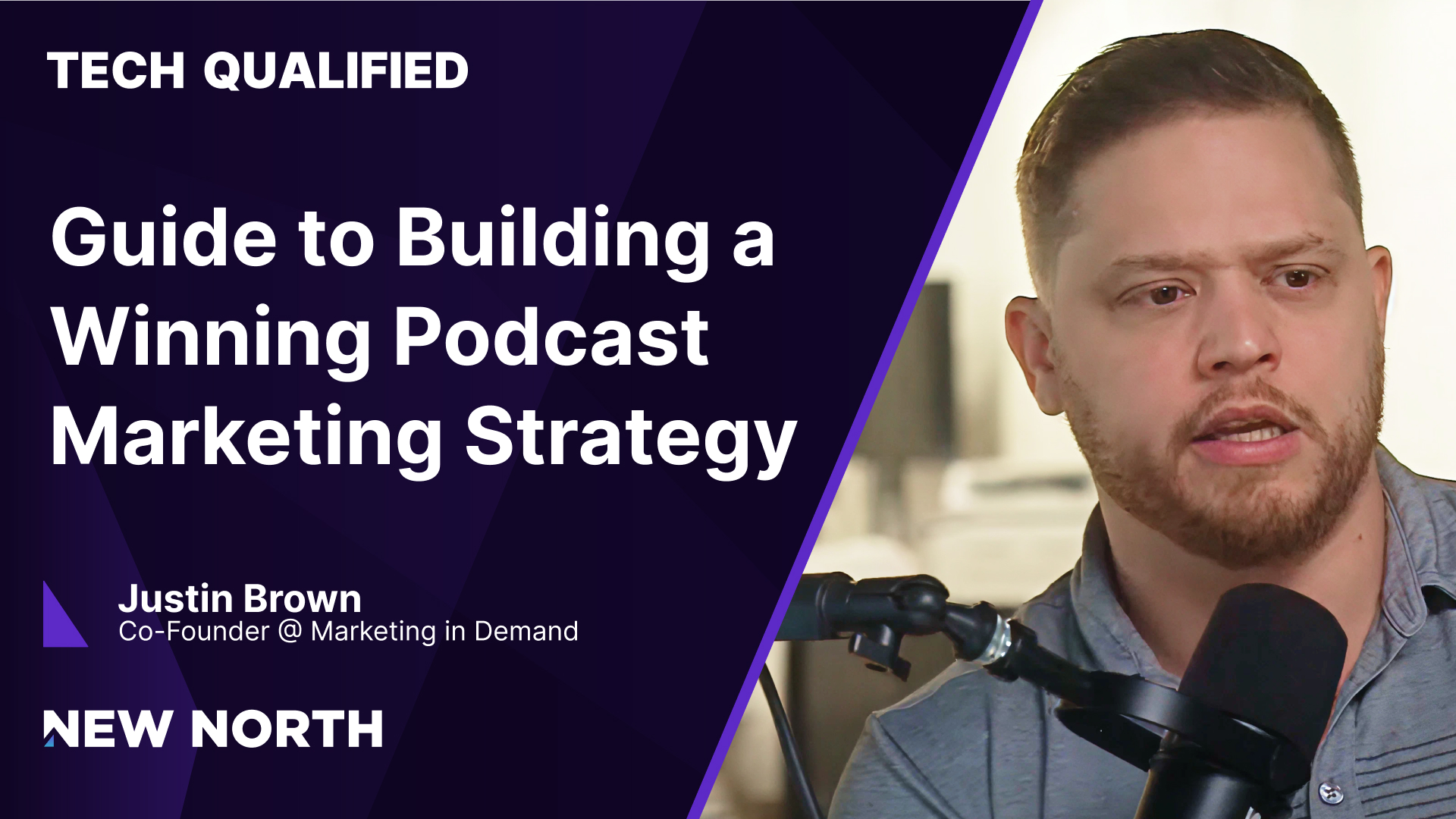Episode Summary
In this episode of Tech Qualified, host Baylee Gunnell sits down with Justin Brown, Co-Founder at Marketers in Demand. They explore the real work that goes into launching and sustaining a successful B2B podcast, especially for small marketing teams. Justin shares why consistency matters more than flashy production and explains how a podcast can anchor content strategy for tech companies.
Justin pushes back on the idea that business podcasts should focus on executive stories or product launches. Instead, he urges listeners to build shows around real audience problems and to use targeted questions that give practical takeaways. He also describes how podcasting can fuel content for blogs, social media, and sales outreach, making it a practical choice for busy teams.
Throughout the conversation, Justin stresses the value of starting simple and building over time. He encourages marketers to respect the medium, aim for steady output, and use podcasting as a tool for lasting relationships and trust—not just vanity metrics.

Key Insights
Build Consistency Before Chasing Creativity
A podcast thrives on a steady rhythm, not just a creative spark. Many teams want to launch something unique, but most shows falter because they lack a sustainable process. The real challenge isn’t creating a flashy first episode—it’s showing up week after week with useful content. For small B2B tech teams, starting simple and lightweight is key. Focus on producing ten solid episodes before investing in big ideas or expensive production. This approach gives you time to refine your workflow, find your voice, and see if you actually enjoy the medium. Consistency builds trust with your audience and lays the groundwork for long-term success. Once you have a foundation, there’s room to experiment and add creative elements. But without discipline and regular output, even the best ideas won’t last.
Anchor Your Content Strategy Around Real Problems
Successful podcasts don’t revolve around executive stories or company news. They center on the audience’s real challenges. Instead of filling airtime with backstories, target specific pain points your ideal customers face. Open episodes with the issues your listeners care about most and design questions to get actionable solutions. This focus makes your podcast a practical resource, not just entertainment. When your show tackles problems that matter to your audience, you’ll earn their attention and trust. It also sets your brand apart in a crowded market filled with generic interviews. By making the listener the hero and addressing their needs first, you turn your podcast into a reliable knowledge hub, not just another chat show.
Don’t Measure Success by Downloads Alone
Downloads and views are easy to track, but they only tell part of the story. For B2B podcasts, especially in niche markets, audience size will rarely reach celebrity levels—and that’s fine. The real value comes from how the podcast strengthens your content engine and relationships. One episode can fuel blog posts, social clips, or outreach campaigns. Hosting guests builds connections that lead to partnerships and new business. Even without huge download numbers, a podcast can help your team learn directly from customers and keep your brand visible in your space. Check your analytics for learning, but don’t let vanity metrics define your success. Focus on the real business outcomes your podcast supports.
Episode Highlights
Why Sprints Fail and Consistency Wins in Content Creation
Timestamp: ~00:01:01 – 00:04:09
Many small marketing teams fall into the trap of content “sprints”—short bursts of activity that lead to one-off assets but don’t build momentum. This approach leaves teams feeling stagnant, always chasing the next big campaign, but never establishing a steady presence. Moving to a podcast or video series helped break this cycle, providing a dependable structure for ongoing content. Consistency, rather than sporadic effort, becomes the backbone of a vibrant brand presence across different platforms. For small teams, this shift reduces complexity and makes it easier to keep up with regular output, while still allowing for creative side projects.
“We did so many things like that over the years where we had these sprints and there was never any sort of consistency… It wasn’t until we found podcasting or video series that we found our lane for creating content consistently on an ongoing basis where you could have a vibrant presence within your space.”
The Listener, Not the Host, Is the Hero
Timestamp: ~00:05:28 – 00:08:13
Business podcasts often fall flat when they focus too much on executive stories or industry “buddy chats.” What listeners actually want is a show that helps them solve problems. The most effective podcasts identify their ideal customer, zero in on the challenges those customers face, and design content to provide real solutions. By shifting the spotlight from the guest’s background to the audience’s needs, shows earn trust and deliver practical value. This “listener-as-hero” mindset separates podcasts that matter from those that get lost in the noise.
“What I have found is that the successful podcast really use a StoryBrand framework… In this situation, it’s the listener—making the listener the hero. What are the problems that the listener is facing, and tackling those very specific issues on the show.”
Podcast ROI Goes Beyond Download Numbers
Timestamp: ~00:17:23 – 00:21:58
In niche B2B spaces, podcast success isn’t about racking up thousands of downloads. The value comes from how a podcast powers other marketing efforts. It can fuel blog content, social media, sales outreach, and even product research. Relationships built through the show can lead to business opportunities and brand advocacy. Downloads matter, but they’re just one metric among many. Smart teams measure a podcast by its impact on content strategy and customer conversations—not by the size of its audience alone.
“To me, a successful podcast or video series, it fuels your blog with good content… A podcast can be an incredible way for you to create content that drives traffic, that fuels your blog, etc., and also be used to create downloadable materials.”
Start Simple and Build Over Time
Timestamp: ~00:27:58 – 00:36:56
Many teams want to launch with a splash—big studios, unique formats, or grand concepts. But most new podcasts benefit from starting simple. Lightweight setups and remote recording let teams experiment and learn what works before investing heavily. With time, shows can evolve and add creative segments or production value. Longevity is the real test of success, not a flashy debut. The best podcasts stay consistent for years, gradually building an audience and refining their approach.
“Start on remote recording. But people want to come out of the gates. They want the fireworks, the flash—you know, the WWE entrance, rockets getting shot off, all the pyrotechnics—for their first show. And while I get it, I do. I get it. I see that fail more often than not.”

